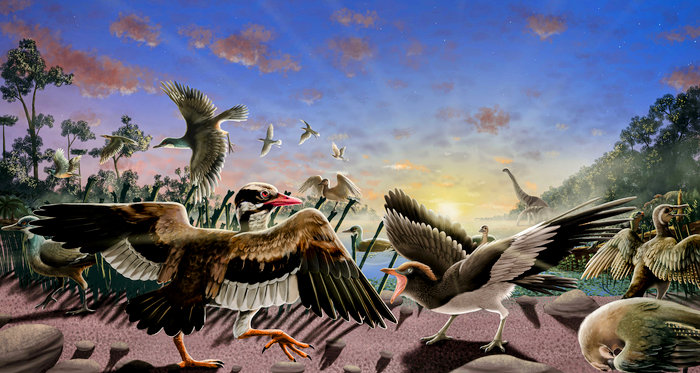
Fascinating fossil birds discovered in China
A paper published in the Journal of Systematics and Evolution describes two new species of fossil birds discovered near the Great Wall of China in a place called Changma. Over a period of twenty years, paleontologists excavated more than 100 individual birds that lived more than 120 million years ago. Many of the fossils were crushed or incomplete, making them impossible to identify. Six of the specimens, however, were useful enough to identify two new species.
“It was a long, painstaking process teasing out what these things were,” said study lead author Jingmai O’Connor, the associate curator of vertebrate paleontology at Chicago’s Field Museum. “But these new specimens include two new species that increase our knowledge of Cretaceous bird faunas, and we found combinations of dental features that we’ve never seen in any other dinosaurs.”
O’Connor’s work focuses on birds and explores why some went extinct with the other dinosaurs, while others survived and gave rise to the species we have today.
“These fossils come from a site in China that has produced fossils of birds that are pretty darned close to modern birds, but all the bird fossils described thus far haven’t had skulls preserved with the bodies,” said co-author Jerry Harris of Utah Tech University. “These new skull specimens help fill in that gap in our knowledge of the birds from this site and of bird evolution as a whole.”
The new genera and species were named Meemannavis ductrix and Brevidentavis zhangi. Meemannavis is named for Meemann Chang, a pioneering female Chinese paleontologist. The birds were similar to modern birds, with Brevidentavis having the small difference of being toothed and having a unique jaw.
“Brevidentavis is an ornithuromorph bird with teeth, and in ornithuromorphs with teeth, there’s a little bone at the front of the jaw called the predentary, where its chin would be if birds had chins,” explained O’Connor. “In this earlier study, we were able to tell that the predentary was capable of being moved, and that it would have been innervated – Brevidentavis wouldn’t just have been able to move its predentary, it would have been able to feel through it,”
It’s possible that Brevidentavis used its strange moveable jaw to catch insect prey, although we’ll probably never know for sure. Either way, it seems paleontologists have found a treasure trove of bird fossils in Changma.
“These discoveries strengthen the hypothesis that the Changma locality is unusual in that it is dominated by ornithuromorph birds, which is uncommon in the Cretaceous,” said O’Connor. “Learning about these relatives of modern birds can ultimately help us understand why today’s birds made it when the others didn’t.”
Image Credit: Illustration by Cindy Joli, Julio Francisco Garza Lorenzo, and René Dávila Rodríguez
—
By Zach Fitzner, Earth.com Staff Writer












